Special Guest Contributor / Yanwu Zhou (Industry Senior Expert)
Editor’s note: “New Variables” is a column launched by Autohome, which shares insights from front-line practitioners in the intelligent automotive industry, providing a glimpse into the key variables of intelligent vehicle development from the perspective of insiders.
On June 7, 2022, Tesla submitted material related to millimeter-wave radar to the Federal Communications Commission (FCC).
Generally, RF-related products listed in the US must submit third-party testing materials to the FCC to prove compliance with US spectrum control rules.
This means that Tesla not only did not give up millimeter-wave radar, but also personally designed a millimeter-wave radar.

In fact, one year ago, on June 3, 2021, Tesla submitted material related to millimeter-wave radar, namely 2AEIM-161631, which is a special 60GHz-64GHz millimeter-wave radar.
The purpose of this millimeter-wave radar is currently unknown. From the materials, its main chip is the TI IWR6843AOP, which may be for Driver Vital Monitoring, monitoring the driver’s heartbeat.
Although Musk has claimed to cancel the forward-facing millimeter-wave radar on vehicles, according to Tesla’s owner’s manuals, the millimeter-wave radar has always been present and has not been cancelled.
In the US, the 2022 Tesla Model Y owner’s manual on page 219 explicitly states:“`
“Traffic-Aware Cruise Control and Autosteer are unavailable because the radar located in the front bumper area of your vehicle has no or low visibility. Continue to your destination. Your vehicle is OK to drive. Traffic-Aware Cruise Control and Autosteer will remain unavailable as long as the radar lacks adequate visibility. This could be a temporary obstruction caused by factors like snow, ice, dirt, or mud. If the alert is caused by a temporary factor like these, no action might be needed: the condition might clear during your drive.”
It can be seen that Tesla’s intelligent driving must be accompanied by millimeter wave radar.
The 2021 Model S Plaid launched this year is the same:
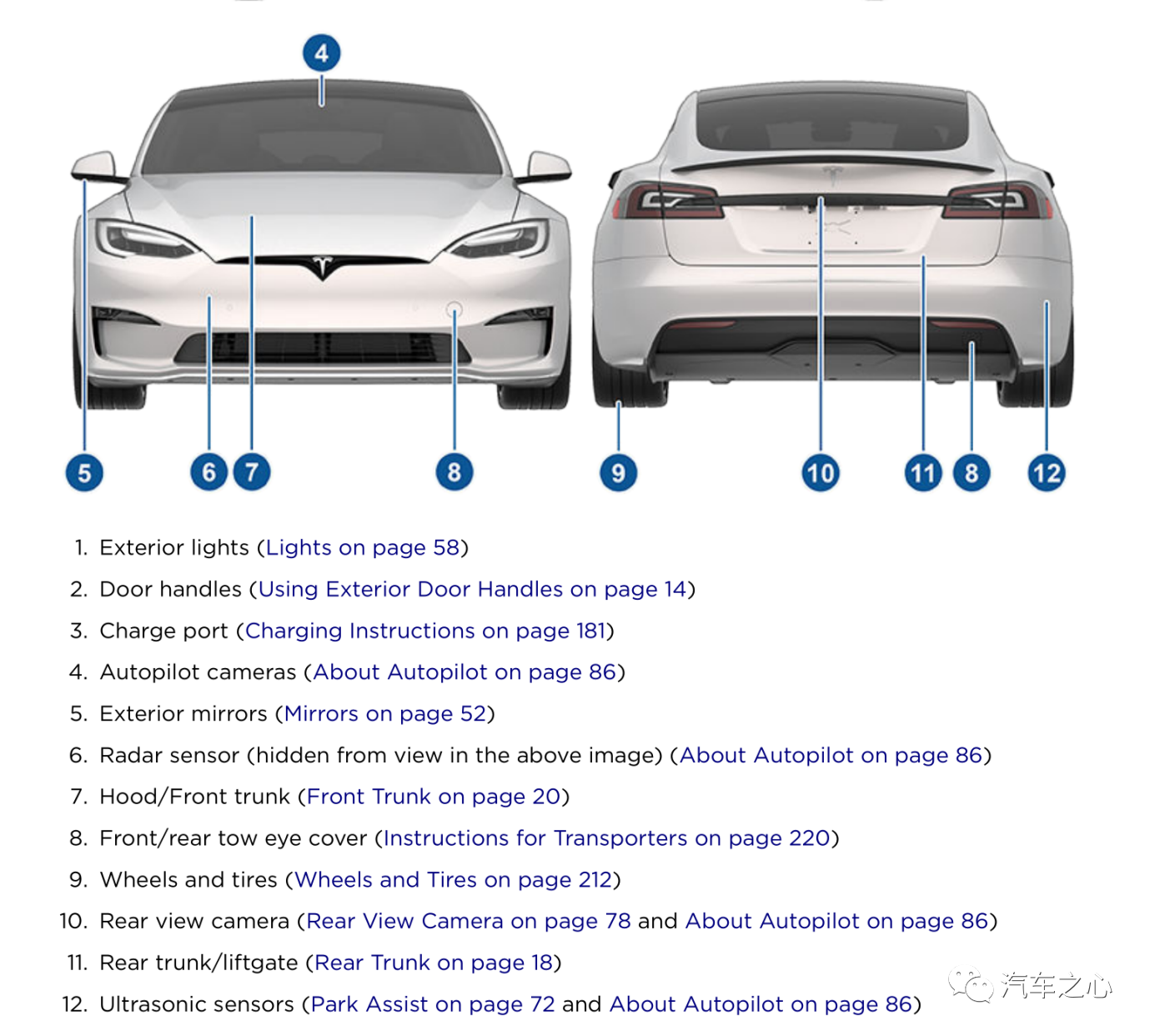
The “6” in the figure represents millimeter-wave radar. Like Model 3, Model S Plaid is equipped with the ARS-4B from ASC under Continental, with a maximum effective distance of 170 meters. This is a product from early 2014, and has very good cost performance, which Tesla has been using.
At the same time, ASC also launched the ARS-4A, with an effective distance of 250 meters, but the price is higher. Therefore, most car companies choose ARS-4A.
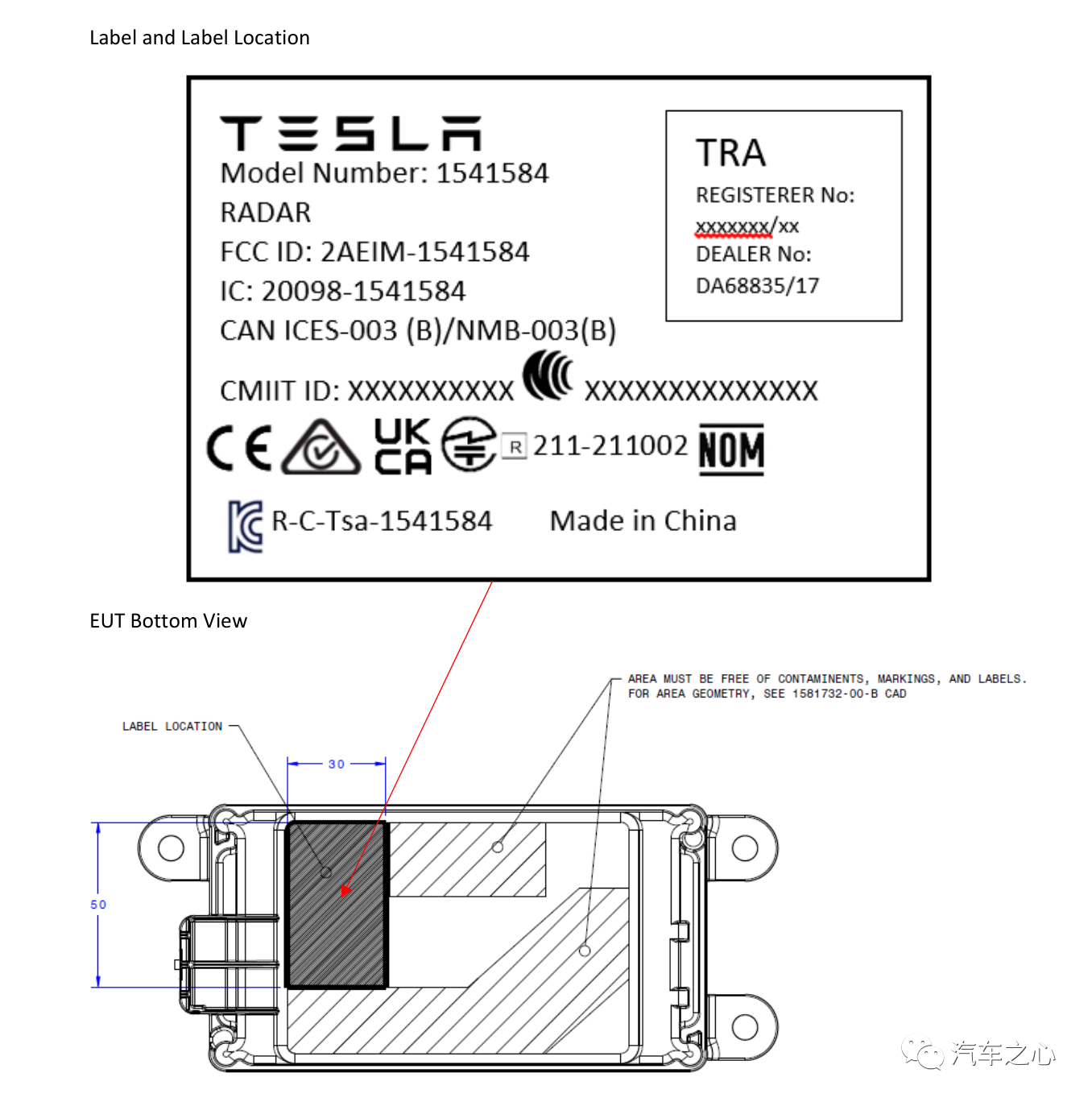
According to FCC practice, some information is confidential and will be released from confidentiality after six months.
Currently, the FCC website only publicly displays the detection report and label of Tesla’s millimeter-wave radar.
“`
At present, there is limited information available, and only the rough parameters are known: it is a Level 3 system, and the power output is not low. The Tesla’s previous ARS-4B on the mainland had a power output of only 52 milliwatts.
Tesla has experienced a series of ghost braking problems, which may not be related to the visual system, but rather to the millimeter-wave radar.
Millimeter-wave radar is sensitive to metal targets, especially pedestrian bridges, roadside signs, and even central guardrails. Tesla has experienced multiple instances of ghost braking. Andrej Karpathy, the former head of Tesla’s AI project, described a typical case of “ghost braking” caused by the “camera + millimeter-wave radar” technology line in a speech:
When the vehicle is about to enter a bridge, the millimeter-wave radar has detected the existence of the “bridge” static object, but because there is not enough resolution, the millimeter-wave radar cannot distinguish whether this object is a bridge or a car.
At this time, visual perception is needed to tell the system what exactly the static object is.
However, due to the association with the millimeter-wave radar, the camera did not provide enough accuracy in measuring the various parameters of the front object.
If there happens to be a slow-moving car ahead (but not enough to cause braking), the system will associate the “decelerating vehicle” reported by the visual system with the “static object” reported by the radar, causing an unnecessary braking event.
Most millimeter-wave radars filter out static targets to avoid ghost braking. However, the ARS-4B used by Tesla was originally designed for the industrial field and does not filter out static targets.
Another issue is that Tesla hides the millimeter-wave radar behind the bumper for aesthetics. If it were a high-quality millimeter-wave radar, this would not be a problem, but the ARS-4B is the lowest-end millimeter-wave radar for mainland cars, and its performance is poor, which is made worse by being hidden.
The solution is simple: not to remove the millimeter-wave radar, but to replace it with a 4D millimeter-wave radar.
Because the visual system is prone to missed detections, a millimeter-wave radar that filters out static targets is also prone to missed detections.
The essential difference between L3 and L2 autonomous driving is that the former tries to avoid missed detections, while the latter allows for missed detections.
In terms of distance and speed measurement, millimeter-wave radar is far more accurate than the visual system and has higher reliability, and it is an irreplaceable presence.
Tesla has always been daring, but even so, it dare not remove the millimeter-wave radar.
The ARS540 of mainland cars and the Bosch fifth-generation millimeter-wave radar are currently the only two 4D millimeter-wave radars with perfect performance.
But there are also drawbacks, one of which is that the price is too high.
It should be noted that the price difference between the ARS4A and ARS4B in mainland China is no more than 50 US dollars.
Secondly, these two 4D millimeter-wave radars have a drawback, which is that they have a back bump that makes their height too high.If the vehicle’s design has not yet been finalized, the installation location for millimeter-wave radar can still be found, which means that 4D millimeter-wave radar can only serve new cars.
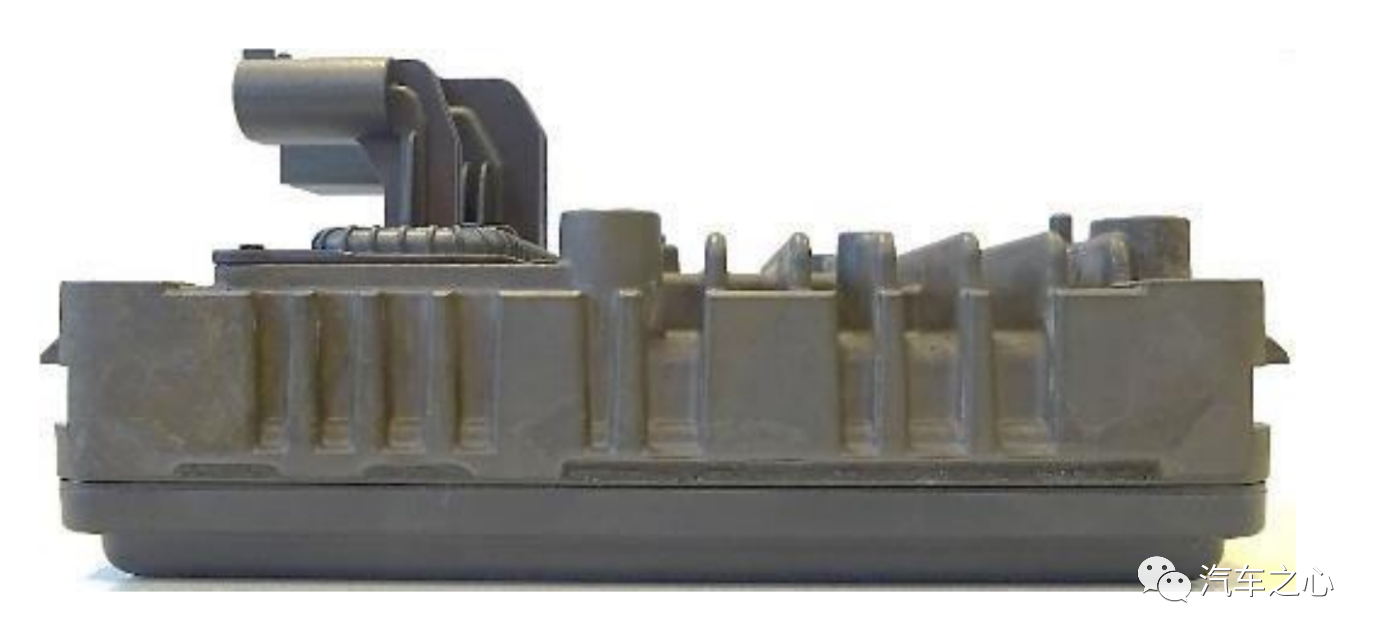
The best performing 4D millimeter-wave radar currently is Continental’s ARS540, which has a large protuberance on the back.
Therefore, Tesla can only personally go to the scene to make its own millimeter-wave radar.
The technical threshold for 4D imaging millimeter-wave radar is actually very low, which is mainly the credit of Texas Instruments.
At the end of 2016, Texas Instruments launched a high-integration 77GHz millimeter-wave radar chip based on CMOS technology—the AWR1642 series, which is suitable for medium and short-range scenes, integrates the front-end MMIC RF, DSP, and MCU modules on a 77GHz millimeter-wave radar SoC chip, significantly reducing the cost of millimeter-wave radar and greatly reducing the hardware development difficulty of millimeter-wave radar for vehicles.
For short-range scenes, TI has developed an antenna-on-package (AoP) chip with higher integration, which integrates the antenna into the chip and integrates the most difficult planar printed antenna into it, reducing the price of millimeter-wave radar to the hundred-yuan level.
Compared with other radar chip manufacturers, TI’s chip development has the characteristics of foolproof, complete underlying software development, and easy-to-use toolchains. Basically, any RF engineer who has been in the industry for two years can independently handle a millimeter-wave radar design.
This has also spawned a large number of start-up millimeter-wave radar companies.
However, after a long time, TI found that the market structure of millimeter-wave radar chipsets monopolized by NXP and Infineon has not changed. TI has explored a new path and promoted the concept of 4D imaging millimeter-wave radar:
- Basically, at the end of 2018, a complete design solution for 4-piece cascaded 4D millimeter-wave radar based on AWR2243 was provided, including the most difficult-to-handle antenna, and an embedded 4-element series-fed patch antenna.
-The algorithm part provides two options: MATLAB MIMO and beamforming, just like a turnkey project, making 4D imaging millimeter-wave radar without technical threshold.
At the same time, as the dominant force of millimeter-wave radar, Continental is also developing 4D imaging millimeter-wave radar. In fact, in 2015, Continental foresaw that traditional 3D (i.e., velocity, distance, and azimuth, which is the data provided by traditional millimeter-wave radar) millimeter-wave radar had reached its limit.The development of ARS540 started in 2016, with the initial design using NXP’s S32R274. However, this caused some problems as using two S32R274 chips resulted in a PCB area that was too large. As automotive radar seeks to be as small as possible, and the frontend sensor fusion requires high bandwidth, the mainland originally planned to use MIPI CSI3, which has a bandwidth of 14.88Gbps, better than the commonly used MIPI CSI2 that S32R274 uses.
However, there are few chips that support MIPI CSI3. In addition, the mainland hoped for higher precision in the ADC, as high resolution is essential for practical use, and clock synchronization between the two chips was also complicated. Eventually, the mainland decided to use Xilinx’s Zynq Ultrascale+ RFSoC series FPGA.
Xilinx’s Zynq Ultrascale+ RFSoC series FPGA is designed specifically for the field of RF and contains ultra-high precision ADC and DAC, with 12- and 14-bit options, with up to 16 ADCs or DACs.
Usually, ASICs are cost-conscious, and the configuration of ADC and DAC is not so luxurious, with only 4 12-bit ADCs and a sampling rate of only 10Msps in S32R274.
After being replaced by FPGA, NXP also started to develop chips for 4D imaging millimeter-wave radar.
In December 2020, NXP launched the S32R45 4D imaging millimeter-wave radar signal processor and TEF82xx transceiver, providing another choice for 4D imaging millimeter-wave radar chips. Infineon and analog devices are also likely to release related chips in the future.
ARS540 is designed with 4 cascaded NXP 77GHz millimeter-wave radar transceivers (MMIC), MR3003. Each MR3003 is 3 transmit and 4 receive, so 4 chips are 12 transmit and 16 receive.
Currently, the vast majority of millimeter-wave radar use single-chip transceivers, usually only 3 transmit and 4 receive, meaning they only have 12 virtual channels. ARS540, with 192 virtual channels, greatly improves the resolution and can be called an image radar.
TI’s solution is similar, using AWR2243 instead of MR3003 and TDA2x instead of FPGA.
Except for German Continental Automotive, most 4D imaging millimeter-wave radar in China and the world are based on TI’s cascading scheme, with 2-stage cascading for low cost and 4-stage cascading for performance.Coming from Israel’s startup Vayyar, they developed their own key transceiver chip, Huawei’s 12 transmit 24 receive 4D imaging millimeter wave radar according to insiders, is likely to use a self-developed chip, which should be a receiver-transmitter cascade of 4 pieces, 3 transmitting and 6 receiving, but it is also possible that it uses Texas Instruments’ AWR1642, which is a set of six cascaded chips that have 2 transmitters and 4 receivers.
Let’s take a look at the Texas Instruments solution. Texas Instruments provides a complete circuit diagram:
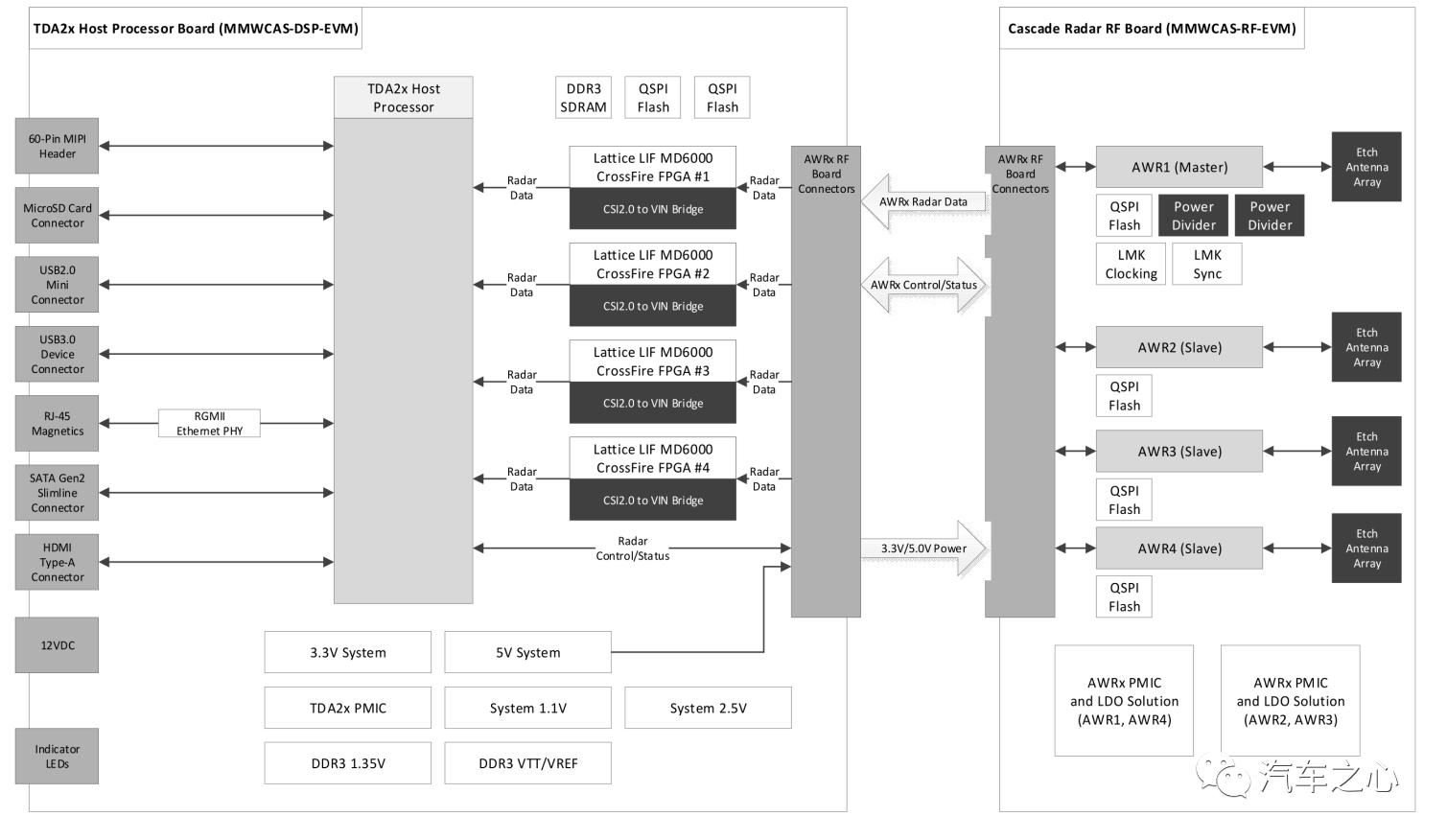
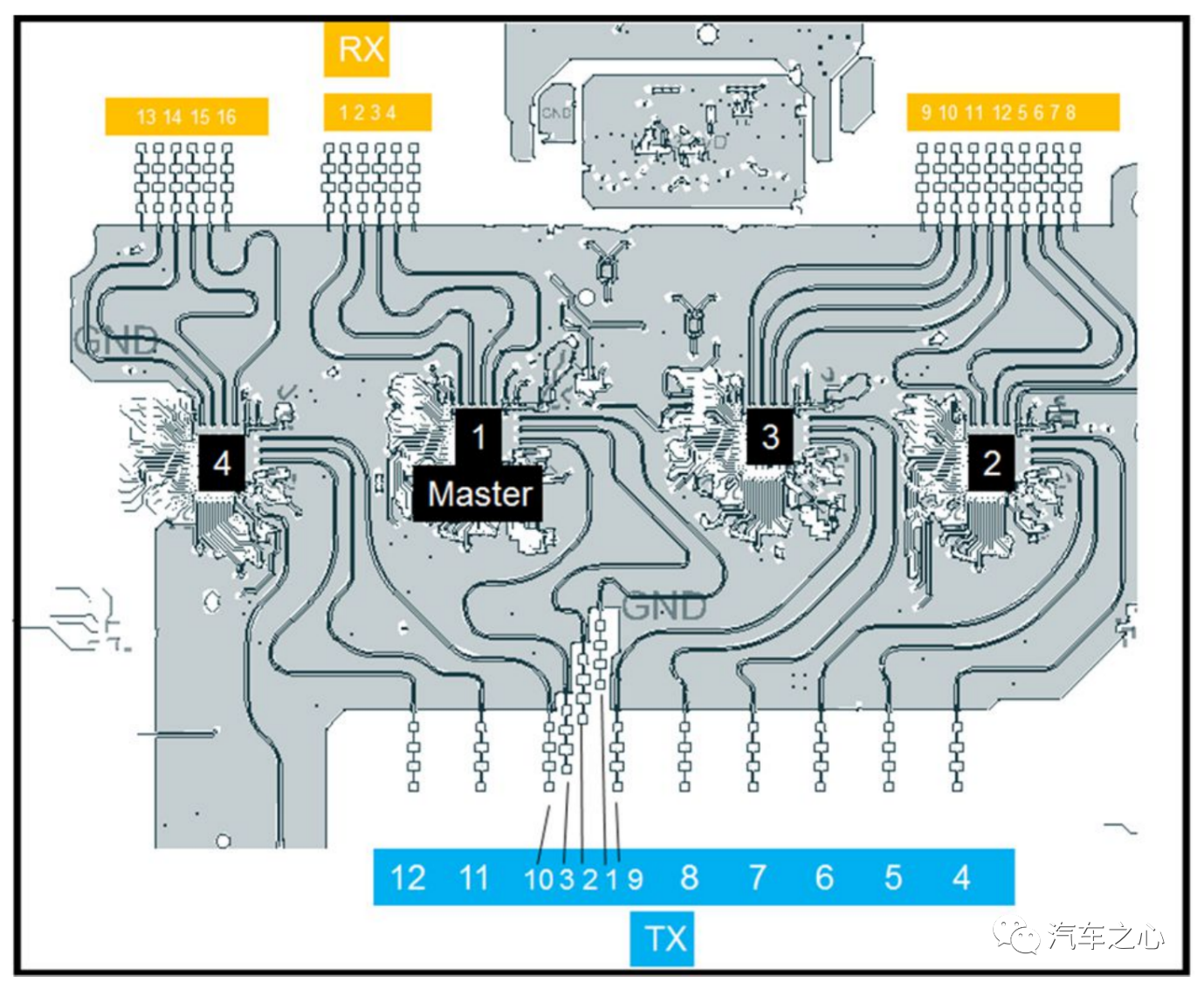
Texas Instruments 4D imaging millimeter wave radar is embedded with a 4-element series-fed patch antenna, using industry’s highest quality Rogers RO3003 PTFE substrate.
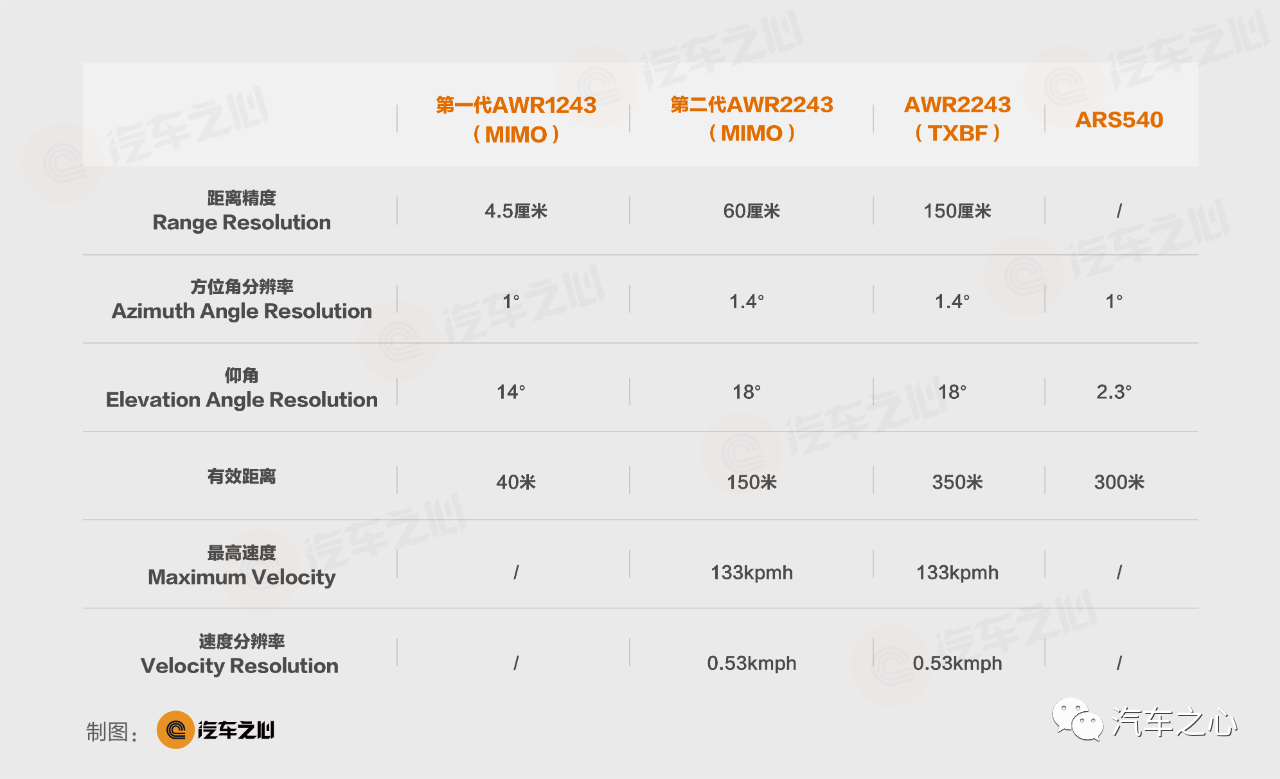
As you can see, Texas Instruments has made compromises between distance and resolution.
ARS540 is the only millimeter wave radar that truly measures target height, which means its vertical resolution, Elevation, is higher, reaching 2.3°, far higher than the Texas Instruments solution because the mainland designs its own antennas with over 20 years of experience, and MR3003 is indeed strong.
From this perspective, ARS540 is still the world’s only 4D millimeter wave radar.
Of course, if you don’t use Texas Instruments’ embedded antenna and design your own, it may be better, but you have to pay a long R&D cycle and purchase millions of yuan worth of R&D equipment and facilities; the startup company certainly won’t invest in fixed assets on such a large scale.
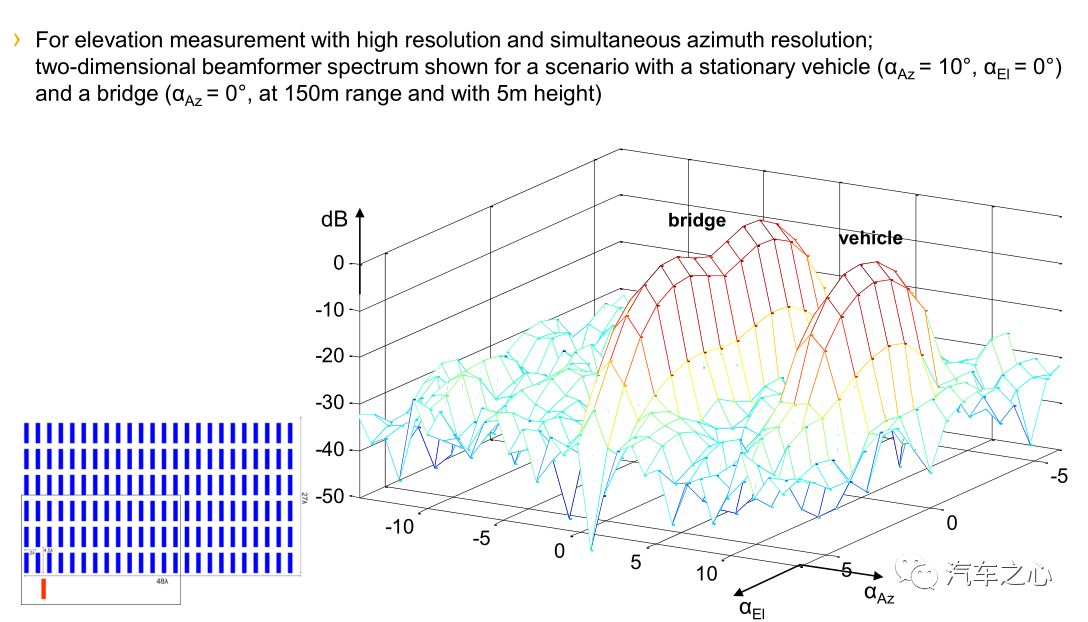
What does the imaging of the millimeter wave radar look like?
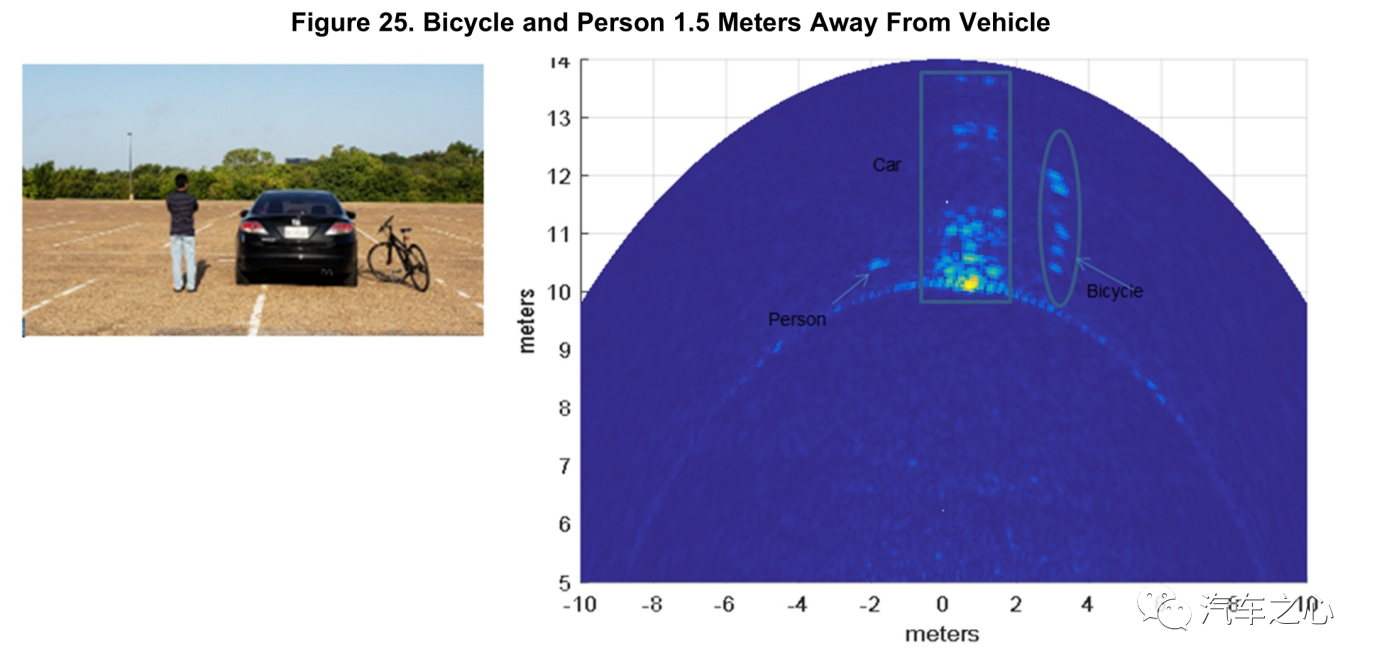
The above picture is taken from Texas Instruments’ development board manual. This is a millimeter wave radar imaging picture of bicycles and pedestrians 1.5 meters away from the vehicle. If it’s an ordinary 3 transmit 4 receive single chip 3D millimeter wave radar, the bicycle probably can only detect one point, and may not even detect it.Even if it is a millimeter wave radar imaging, pedestrians are just a small dot, which cannot be detected by ordinary radar because the performance of metal reflection of electromagnetic waves is much higher than that of human body.
Obviously, imaging millimeter wave radar cannot be compared with laser radar imaging.
As for Bosch’s fifth-generation millimeter wave radar, there is currently no detailed information, but it is definitely a 4D radar, and its performance may be no less than that of Continental Automotive’s ARS540, with a bandwidth of 76.065-76.932 GHz, almost 900MHz, while ARS540 is only 500MHz.
Bosch’s drawback may be that its power consumption is too high, with an RF output power of up to 5495 milliwatts and an estimated overall power consumption of 20-40 watts. The RF output power of the ARS540 is 1143 milliwatts.
The total of Tesla’s three lines is 356 milliwatts, so it is speculated that Tesla may have made compromises on the effective distance.
By December 4th of this year, the FCC will reveal Tesla’s millimeter wave radar internal disassembly photos, component composition, and even circuit diagrams.
I will inform you as soon as possible, stay tuned.
This article is a translation by ChatGPT of a Chinese report from 42HOW. If you have any questions about it, please email bd@42how.com.
